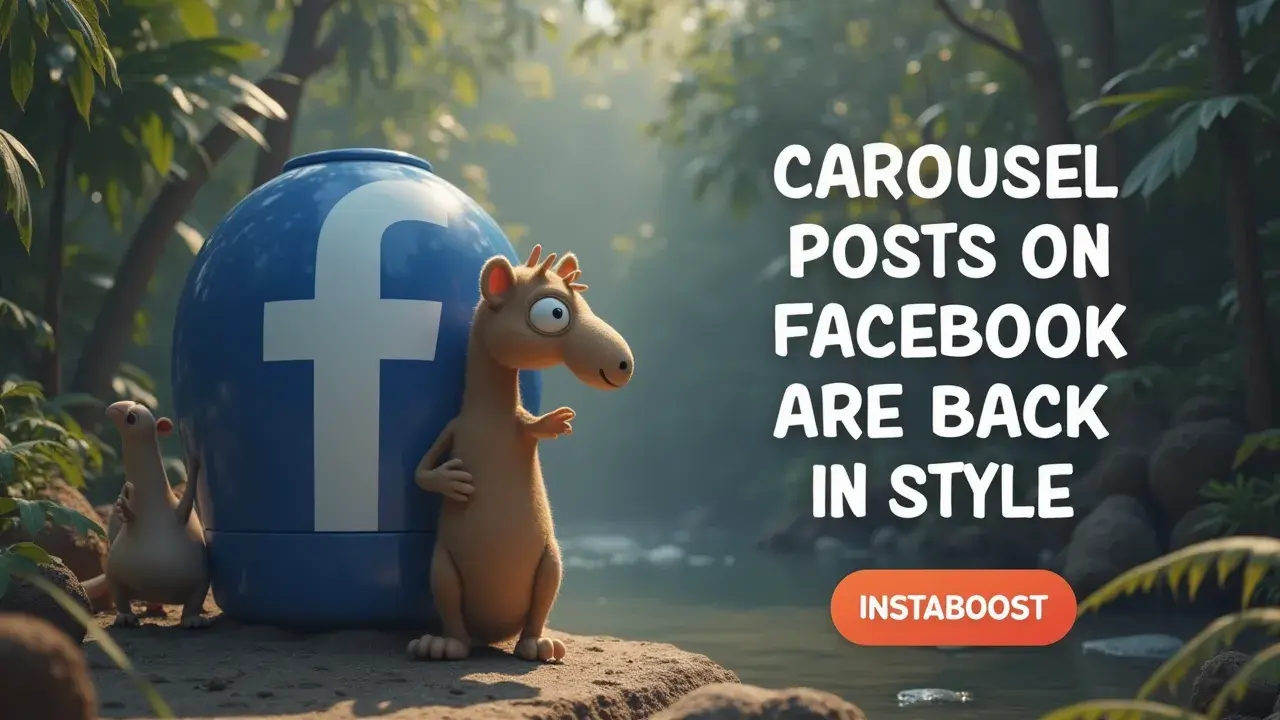Are Carousel Posts on Facebook Back in Style?
Carousel posts are regaining momentum as an engaging Facebook format. They let audiences swipe through multiple visuals or messages, increasing touchpoints and sustained attention when each frame adds clear value. Results lag when slides are repetitive or cluttered, but thoughtful sequencing and consistent visual cues make the format feel cohesive and rewarding. Aim for focused frames and a clear narrative to make performance easier to track and refine.
Why Facebook Carousel Posts Are Winning Attention Again
You’ve probably seen those Facebook posts where you swipe or click through a bunch of images or slides. They’re called carousels. For a while, they were everywhere in marketing, and then, as the algorithm changed, people seemed to stop using them as much. Lately, though, I’ve noticed them popping up again – not just from big advertisers, but from smaller creators and brands, too.
The way people are using carousels now isn’t all about flashy graphics. There’s more focus on actually connecting with people: explaining something step by step, sharing a set of tips, or even building the kind of short story that doesn’t really fit into a single image or an eight-second video. When you swipe through a carousel, you move at your own pace. It’s different from the usual scroll, where you see something for a second and move on.
There’s a bit of an invitation to stop and pay attention, maybe even to respond. Part of why this works is because Facebook’s algorithms, lately, have started rewarding posts that keep people engaged for longer, so there’s a real incentive to create this kind of experience – especially for those looking to increase reach on Facebook without relying solely on viral trends.
For anyone who keeps an eye on trends, it’s interesting to see how carousels are being used now – to teach something, to break down a process, to mix in a product recommendation with a bit of a story. It says something about what people want from social media, and what actually makes them stick around.
There’s a bit of an invitation to stop and pay attention, maybe even to respond. Part of why this works is because Facebook’s algorithms, lately, have started rewarding posts that keep people engaged for longer, so there’s a real incentive to create this kind of experience – especially for those looking to increase reach on Facebook without relying solely on viral trends.
For anyone who keeps an eye on trends, it’s interesting to see how carousels are being used now – to teach something, to break down a process, to mix in a product recommendation with a bit of a story. It says something about what people want from social media, and what actually makes them stick around.

Patterns That Prove the Carousel Comeback
We stopped guessing and started paying attention to patterns. After a few months of tracking our Facebook posts, one thing stood out: carousel posts were popping up more often, and people seemed to actually pause and interact with them. It didn’t feel like an old trend making a comeback – something about the numbers showed people really were clicking and swiping through carousels more than single images or videos. Part of that probably comes down to how Facebook’s algorithm rewards interaction, since carousels give you more ways to engage.
But it’s also just how people use them. When someone wants to break down an idea step by step or share a quick how-to, a carousel gives them more space than a single image ever could. Lately, “carousel engagement” has started showing up in marketing reports, and a few agencies I’ve talked to are paying closer attention to it. If you scroll your feed, you might notice more swipeable posts sharing tips or explanations – stuff that gets people talking, not just reacting with a like. I guess it’s a bit like the way people buy followers to grow Facebook accounts; certain strategies just start to stand out when you’re looking for what seems to work, whether it’s new or just recycled. Carousel posts never totally disappeared, but this shift feels like a mix of the platform pushing them and people wanting a different way to put things out there. If you watch for it, you start seeing it more – people laying out ideas quietly, one slide at a time.
Why Quiet Consistency Wins with Carousel Strategy
A smart strategy doesn’t have to grab attention with noise. Facebook carousel posts are a good example – when they work, it’s not because they’re flashy, but because they’re steady and clear. The best carousels aren’t a loose stack of pictures; they’re put together with intention, often to walk someone through a process or lay out an idea step by step. When you swipe through, each card gives you something specific – a look at how a product comes together, a before-and-after, or maybe a handful of short tips that are easier to take in one at a time. The format does some of the work by encouraging people to tap through, but what matters more is how the story is paced.
It’s not about dumping a lot of information in one go, or following whatever’s trending that week – sometimes, it’s just about organizing things so each step feels connected to the last, and you’re never overwhelmed. There are plenty of ways brands try to boost their posts – some turn to things like buy likes for Facebook photos – but when carousels are used thoughtfully, they show a kind of respect for the audience’s attention. In a feed full of things competing to be the loudest, there’s something to be said for the posts that guide you quietly, that let you take things in piece by piece, without pressure to rush through.
Dismantling the “Carousels Are Outdated” Myth
It’s not really fear that keeps us from trying carousels again – it’s just habit. A lot of people still think of those old Facebook carousels as boring sales pitches or endless slideshows that felt like a slog. That impression lingers.
So when we see carousels now, it’s easy to assume they haven’t changed much. But they actually have. Lately, creators seem to use them more for sharing ideas, telling stories, or starting conversations – not just selling things. If carousels still seem outdated, it might be worth scrolling through your feed or looking at recent engagement numbers – turns out people respond pretty well to these swipeable posts.
There’s something about moving through small bits of information at your own speed that seems to work. If we keep writing carousels off because of what they used to be, we probably miss how they fit with the way people want to connect or learn now. What used to feel like background noise can be more useful if we give it another shot. It makes sense, especially when basic stuff like getting Facebook views for engagement is a normal way to gauge whether these new formats are working. The best creators aren’t just dumping info – they’re thinking about how to tell a story or explain something in steps, and apparently that’s the kind of thing the algorithm likes. Sometimes I think the stuff we get tired of doesn’t just stay that way; it comes back a little different. I guess it’s worth noticing what’s changed before writing it off for good
Making the Most of the Carousel Comeback
It’s probably worth letting each post show you something, then using that as a reason to try a small change next time. The way people are paying attention to Facebook carousel posts now isn’t just a phase; it’s more like a reminder to rethink how we share, so people don’t just scroll by. Even if your numbers look good or you’re still working things out, it’s easy to fall into repeating yourself.
But if you look at each carousel, you can usually spot which slides made people swipe, which lines of text got some kind of reaction, or which order seemed to keep people around longer. Carousels work better when you treat them less like announcements and more like a way to invite some kind of back-and-forth; each one gives hints about what actually connects. That’s part of what makes them useful – their format almost nudges you to keep adjusting, instead of just doing what everyone else is already doing. Sometimes, if you’re looking through your analytics or even just reading the comments, you notice patterns you didn’t expect – like a practical example pulling in more attention, or posts about common problems getting shared more, especially when people decide to buy reposts to grow on Facebook and push them further.
Those are the details that give you something to work with. The people who figure out carousels usually aren’t the ones repeating themselves every time; they’re the ones who notice things and make small changes, even if it’s not obvious. In a feed where everything disappears so fast, carousels stand out a bit because they sort of force you to keep at it – so each time, it’s less about getting it exactly right, and more about letting the last round nudge you toward what to try next...















